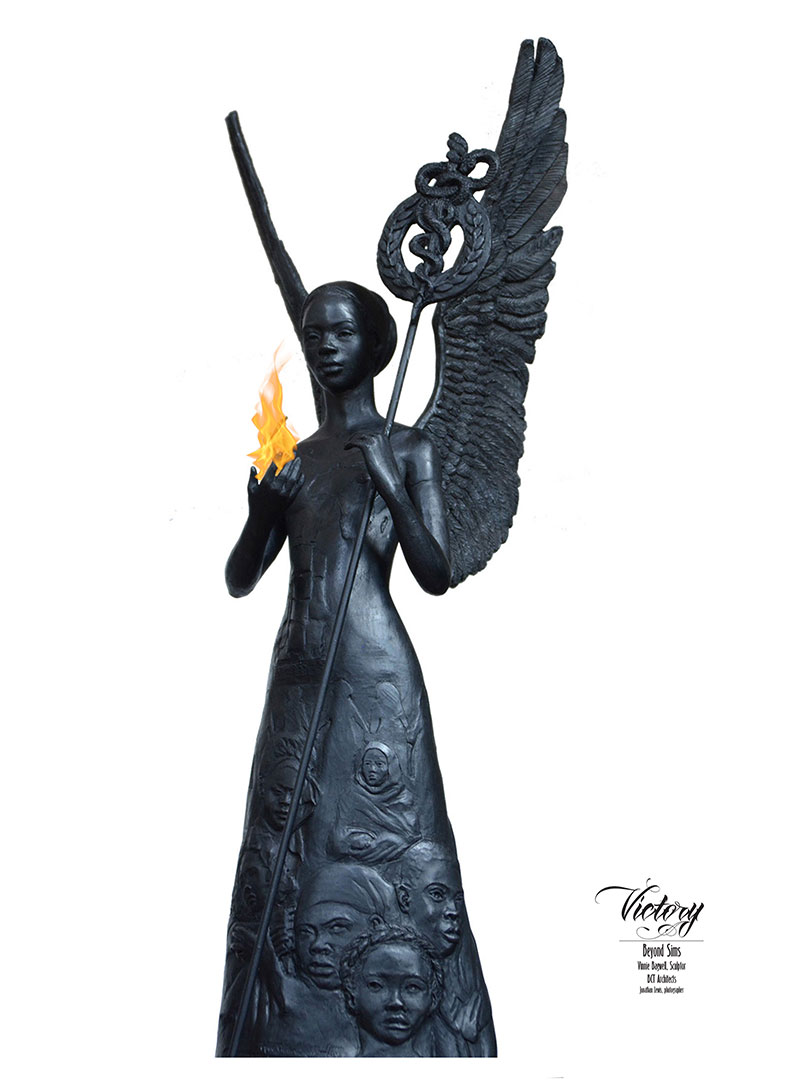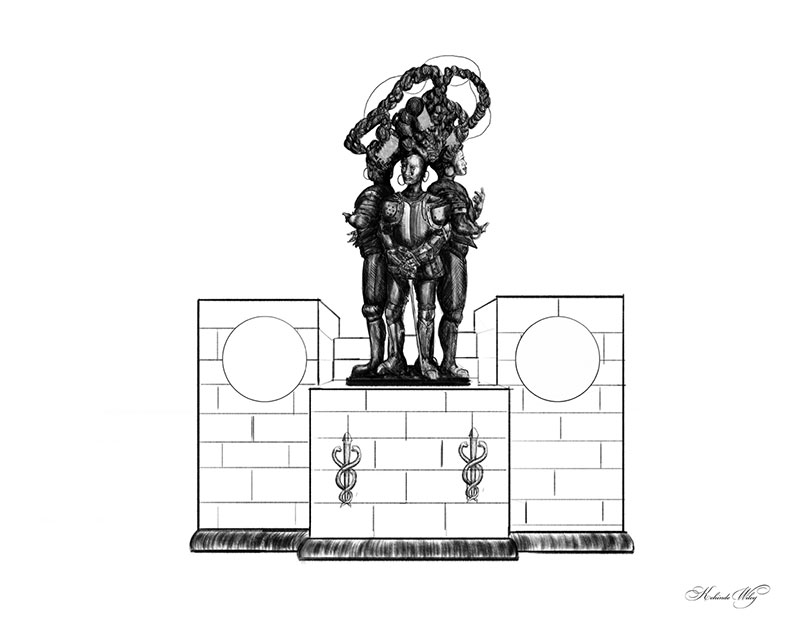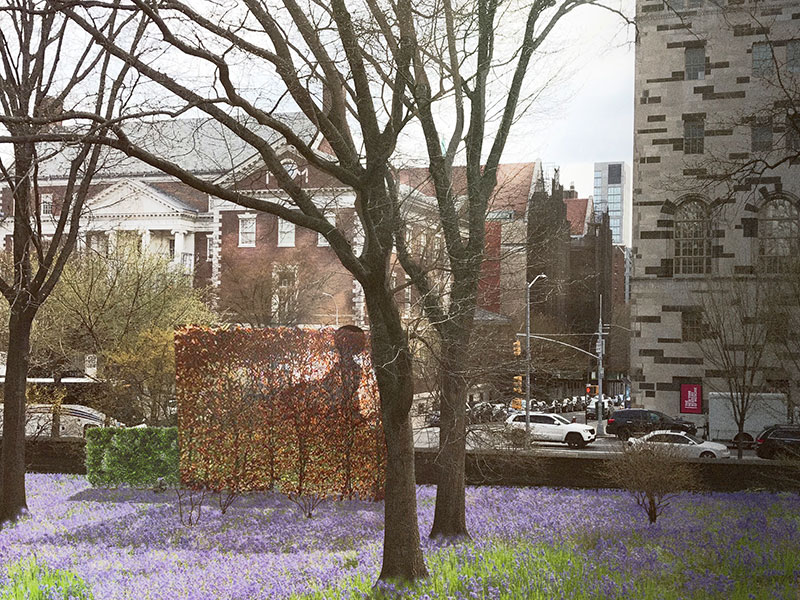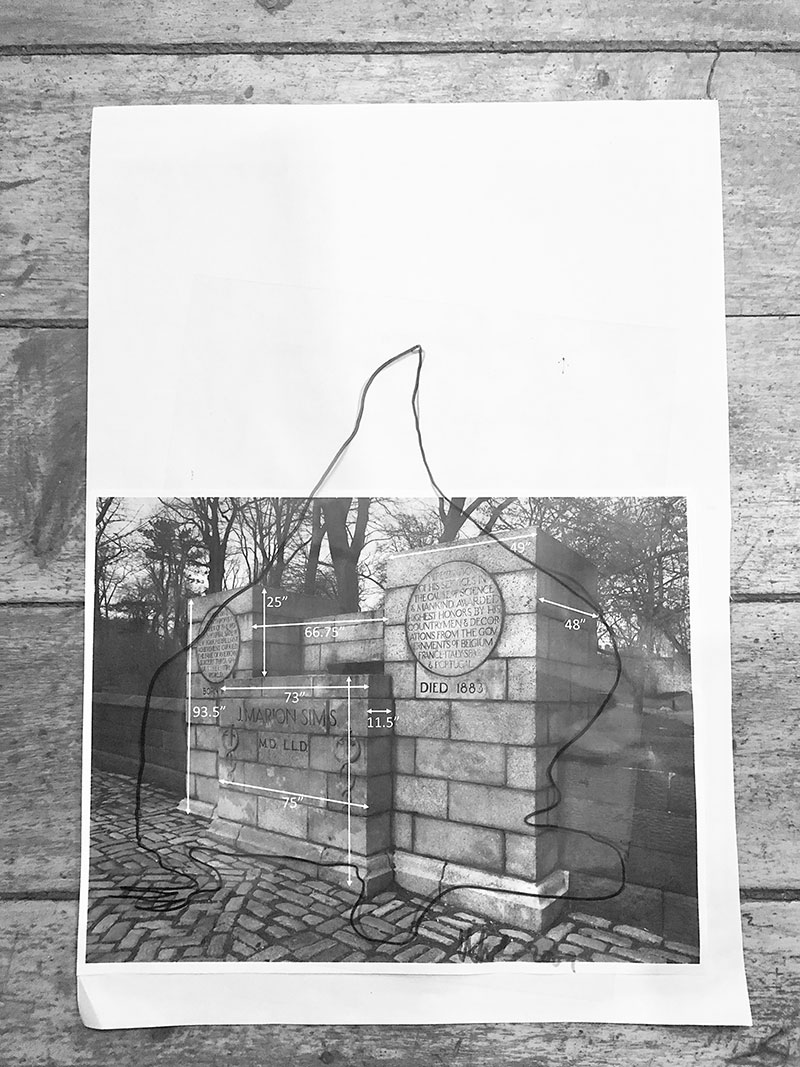
 NYC Cultural Affairs311
NYC Cultural Affairs311 Search all NYC.gov websites
Search all NYC.gov websites
Beyond Sims: Artist Proposals
In April 2018, building on the recommendations of the Mayoral Monuments Commission on City Art, Monuments, and Markers and years of community advocacy, the City removed the statue of J. Marion Sims from its site on the edge of Central Park at 103rd Street. Following the removal of the statue, the Department of Cultural Affairs, Parks Department, and Department of Health and Mental Hygiene partnered with local stakeholders to form the Committee to Empower Voices for Healing and Equity to inform and guide the commissioning of a new, permanent artwork reckoning with the legacy of J. Marion Sims, in an effort to help heal and move the community forward.
Following an open call for artists, the following four artists were selected to produce conceptual proposals for the this new public monument. Each is accompanied by statements from the artists who submitted them. The selected artist will be chosen by a Percent for Art panel established for this project (which includes City agencies, community representatives, public art specialists, historians, and other experts), and the monument is anticipated to be completed by 2021. After reviewing the concepts, the public can use the form at the bottom of this page to share thoughts, reactions, and other feedback. The community feedback will be considered by the Percent for Art panel when it convenes to select the finalist. Feedback will be collected through October 4, 2019.
Beyond Sims Artist Proposals:
Vinnie Bagwell

Victory Beyond Sims
Sculpture and pedestal 18’3” high.
Bronze, Rainbow granite, eternal flame
“In broad daylight, a majestic angel shall be seen by progressives as a beacon in increasingly populist times. The first glance will inform viewers that this guide for souls bears a live flame in her right hand that shall leap and dance at her will, as she wields the power of enlightenment. The staff she grasps, crowned by the Arc of Asclepius, encircled by a wreath, represents the unending circle of life. Titled, Victory Beyond Sims, viewers minds shall be quickened and their spirits lifted by her presence. ‘Victory’s’ gaze shall be casted upon fertile ground, envisioning the growth of all who visit this sacred place.”
Kehinde Wiley

Untitled
Sculpture and pedestal approximately 15’ high
Bronze, granite
“Kehinde Wiley proposes to replace the statue of J. Marion Sims with a memorial to Black American
women. Wiley’s new bronze triptych will build upon themes in his previous work, Bound
(2014), celebrating the strength and beauty of women with a specific focus on three
Black, American, female doctors. This new monument will at once specifically honor these
three women while also honoring their community of colleagues, whose hard work
continues to improve the lives of the citizens of the City of New York, the country, and our shared world.
The three doctors will be sculpted dressed in armor, as an homage to the brilliance and
power of the Black American women who have been pillars throughout Wiley’s life. Their
hair and arms will be intertwined with one another as a symbol of their combined
strength. Wiley’s statue will stand as a symbol of collective empowerment, focusing on the
incredible achievements of a community over any single individual.”
Simone Leigh

After Anarcha, Lucy, Betsey, Henrietta, Laure, and Anonymous
18' H x 16' W x 7' D
Bronze, landscape
“This bronze sculpture is a larger-than-life, Black femme at rest. The figure is draped in fabric that recalls traditions of dress from across the African diaspora. Her position, in Western Art history parlance, is an odalisque pose--a position originally used to give western painters the freedom to display the female figure by using the body of a woman of color as a proxy. This use of the black body in painting and sculpture echoes the real history of black women in this country including Anarcha, Lucy, Betsey, Henrietta Lacks, and Anonymous--- whose bodies were used to advance science. In this way, the sculpture responds to the history of site on which it is built. However, this sculpture simply represents a black figure at rest, a contemporary response to a dearth of representation of black beauty in Western Art. In addition, the proposal includes a landscape that frames the monumental figure with hedges of holly and a wake of blue bells in Spring--a constantly changing glorification of the black body as monument through the four seasons.”
Wangechi Mutu

To Raise a dead Giraffe
Approx. 14’ H x 11’ W x 6.5’ D
Bronze
“To Raise a dead Giraffe is a drawing I have made with the intention of transforming into an outdoor sculptural work.
I have drawn many similar images, some more gruesome than others, of slaughtered animals lain next to live human beings. In my mind these corpses are symbols of a kind of sacrifice that has been made, or that needs to happen, in light of the present and historical inequities and inhumanities.
In this drawing, there is the body of a human seated upon the body of a large slain animal as if in mourning, so as not to forget the enormity of the waste and the killing that has taken place.
The two are connected through a pattern that makes their bodies blend and camouflage together and they are also connected with a membrane that wraps around the human like a veil and covers the animal like its very own sheet of skin. They seem as if they are sprouting and supporting one another.
During the late 18th to 19th century, European and American exploration, invasion and mass pillaging of Africa began with the likes of Doctor Livingston and Henry Stanley and was parallel to the medical explorations, the cultural invasions and physical brutalization of African peoples' bodies. These were the days when Dr. Marion Sims purportedly invented groundbreaking instruments that revolutionized the science of gynecology. This was a time when the bodies of Africans and the African continent were utilized as a means to an end in the most brutal and inhumane manner. As always during deep crisis and times of drastic transformation women, and children especially, are most vulnerable and most exploited. The rape, the forced breeding, the hand and body mutilations, the cruel and unnecessary scientific experiments and medical malpractice were rife.
To Raise a dead Giraffe, like most of my work is inspired by photography, and is in particular, a reaction to a recent wave of big trophy hunting by wealthy Americans looking for that feeling of conquering, destroying and consuming what is African. This barbaric activity exists in modern times and is a remnant of a callous and inhumane attitude towards the life and wellbeing of others, especially those that do not look like oneself – including animals. The trading, mutilating, torturing and killing of people for commercial reasons was always seen as a necessary practice for the greater economic good and to lessen the burden of pain and price on the European body.
I hope this large and majestic slain animal with its avatar delivers a change in how we treat one another and brings an end to the particular feelings of superiority and authority over others that have led to the destruction of so many lives and of the Earth.”
*To Raise a dead Giraffe may be a working title - Wangechi generally finalizes titles once works are complete.


